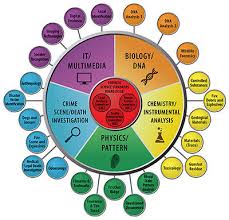Terrorism in the United States: An In-Depth Analysis
Abstract:
Terrorism poses a significant threat to national security and public safety in the United States, manifesting in various forms and ideologies. This essay provides a comprehensive examination of terrorism in the USA, exploring its historical roots, contemporary manifestations, causes, impacts, and responses. Drawing upon scholarly research, government reports, case studies, and statistical data, this essay aims to elucidate the complexities of terrorism, its implications for law enforcement and public policy, and the strategies employed to counter this persistent challenge.
1. Introduction
Terrorism represents a grave and multifaceted threat to the United States, encompassing a diverse array of actors, ideologies, and tactics. Defined as the use of violence or intimidation to achieve political, ideological, or religious objectives, terrorism has plagued the USA throughout its history, from domestic extremist groups to transnational jihadist organizations. This essay provides a comprehensive analysis of terrorism in the USA, examining its historical evolution, contemporary manifestations, root causes, impacts, and responses by law enforcement and government agencies.
2. Historical Evolution of Terrorism in the USA
The history of terrorism in the USA is characterized by a series of distinct waves and movements, each shaped by its own unique set of circumstances and motivations. The 19th century witnessed the emergence of domestic extremist groups, such as the Ku Klux Klan, targeting African Americans, immigrants, and other minority groups with acts of violence and intimidation. In the late 20th century, the USA experienced a surge in left-wing and right-wing extremism, exemplified by groups like the Weather Underground and the Oklahoma City bombing.

The events of September 11, 2001, marked a turning point in the history of terrorism in the USA, ushering in an era of heightened vigilance and counterterrorism efforts. The attacks, perpetrated by the Islamist extremist group al-Qaeda, highlighted the vulnerability of the USA to transnational terrorist threats and spurred the adoption of new security measures and policies to combat terrorism at home and abroad.
3. Contemporary Manifestations of Terrorism
Terrorism in the USA today encompasses a wide range of actors and ideologies, including domestic extremists, international terrorists, and lone wolves inspired by radical ideologies. Domestic extremist groups, such as white supremacists, anti-government militias, and eco-terrorists, pose a significant threat to public safety and social cohesion, targeting marginalized communities and government institutions with acts of violence and intimidation.
Transnational terrorist organizations, such as ISIS and al-Qaeda, continue to inspire and recruit individuals within the USA to carry out attacks in their name. While the decline of ISIS’s territorial caliphate has diminished its operational capabilities, the group remains a potent threat through its online propaganda and recruitment efforts. Lone actors, radicalized online or inspired by extremist ideology, present a particular challenge to law enforcement agencies, as they often operate independently and without direct connections to terrorist organizations.
4. Causes of Terrorism
The root causes of terrorism in the USA are complex and multifaceted, reflecting a combination of political, social, economic, and ideological factors. Some common drivers of terrorism include:
- Political Grievances: Perceived injustices, such as government policies perceived as discriminatory or oppressive, can fuel grievances and radicalization among marginalized communities, leading individuals to embrace violent extremist ideologies as a means of resistance or retaliation.

- Social Alienation: Feelings of social alienation, exclusion, or marginalization can drive individuals towards extremist groups that offer a sense of belonging, identity, and purpose. Extremist ideologies, whether based on race, religion, or ideology, provide a sense of community and camaraderie for individuals who feel marginalized or disenfranchised by mainstream society.
- Economic Disparities: Socioeconomic inequalities, including poverty, unemployment, and lack of economic opportunities, can create fertile ground for recruitment by terrorist organizations seeking to exploit grievances and recruit individuals with promises of financial rewards or social status.
- Ideological Indoctrination: Radicalization to violent extremism often involves exposure to extremist propaganda, online radicalization, or indoctrination by charismatic leaders or ideologues. Extremist groups use propaganda and social media to disseminate their ideologies, recruit new members, and incite violence against perceived enemies.
5. Impacts of Terrorism
Terrorism has far-reaching consequences for individuals, communities, and society as a whole, spanning physical, psychological, and socioeconomic domains. Some common impacts include:
- Loss of Life and Injury: Terrorist attacks can result in significant loss of life and injury, causing physical harm to victims and their families. The emotional trauma and psychological toll of terrorism can have lasting effects on survivors, witnesses, and first responders, exacerbating feelings of fear, anxiety, and grief.
- Disruption of Society: Terrorist attacks disrupt the normal functioning of society, causing fear, panic, and uncertainty among the population. The psychological impact of terrorism can lead to changes in behavior, such as avoidance of public spaces or heightened security measures, that affect daily life and social interactions.
- Economic Costs: Terrorism imposes substantial economic costs on governments, businesses, and individuals, including expenses related to emergency response, healthcare, infrastructure repair, and security enhancements. The disruption of economic activities, such as tourism, trade, and investment, can have ripple effects throughout the economy, leading to job losses, revenue declines, and reduced consumer confidence.

- Erosion of Civil Liberties: In response to terrorism, governments may implement security measures and policies that infringe upon civil liberties and human rights, such as surveillance, detention without trial, and restrictions on freedom of speech and assembly. These measures can undermine democratic principles and values, leading to tensions between security and civil liberties.
6. Counterterrorism Strategies and Responses
Addressing terrorism requires a multifaceted approach that combines law enforcement, intelligence, diplomacy, and community engagement. Some key strategies and responses include:
- Prevention and Intervention: Preventing terrorism involves identifying individuals at risk of radicalization and intervening before they become involved in violent extremism. This may include outreach programs, counseling services, and social interventions aimed at addressing underlying grievances and providing alternatives to violence.
- Law Enforcement and Prosecution: Law enforcement agencies play a critical role in disrupting terrorist plots, apprehending suspects, and bringing them to justice. Enhanced coordination and cooperation between federal, state, and local law enforcement agencies, as well as international partners, are essential for effective counterterrorism efforts.
- Intelligence Gathering and Analysis: Intelligence agencies collect, analyze, and disseminate information about terrorist threats and activities to support law enforcement operations and inform policymaking. Enhanced intelligence sharing and collaboration between government agencies, as well as with international partners, are essential for identifying and mitigating terrorist threats.

- Community Engagement and Resilience: Building trust and cooperation between law enforcement agencies and communities is essential for preventing radicalization and countering violent extremism. Community-based initiatives, such as outreach programs, youth engagement, and interfaith dialogue, can promote social cohesion and resilience against extremist ideologies.
7. Conclusion
Terrorism poses a significant and complex challenge to the United States, requiring a comprehensive and coordinated response from government agencies, law enforcement, civil society, and international partners. By understanding the historical roots, contemporary manifestations, causes, impacts, and responses to terrorism, stakeholders can work together to mitigate the threat and protect the safety and security of the American people. Through a combination of preventive measures, law enforcement efforts, and community engagement, the USA can confront terrorism while upholding democratic principles, human rights, and the rule of law.



